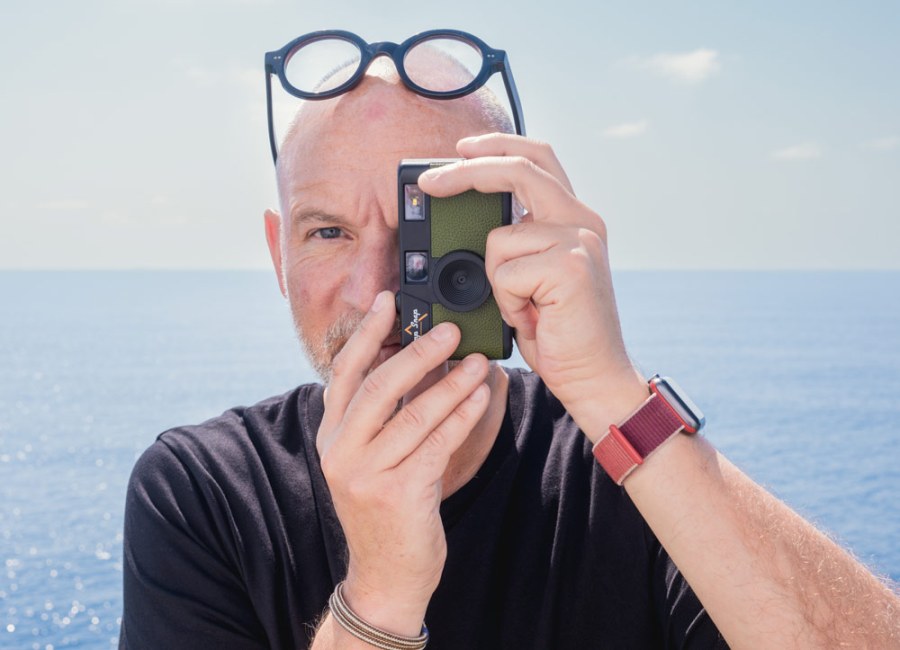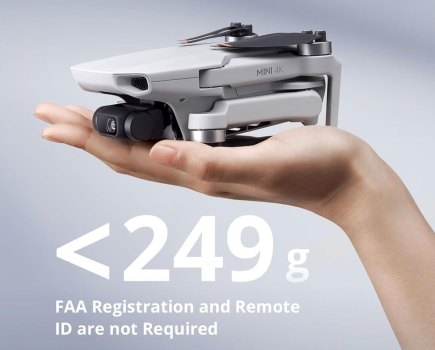It’s easy to think that you need the very latest mirrorless camera for your photography, but as Ben Brain reveals, embracing the lo-fi aesthetics of a cheap camera aimed at kids can be very liberating – and even exhilarating
Full disclosure: I have a penchant for quirky, cheap toy cameras. I love the low-fi quality and weird anomalies that cheap plastic lenses produce. I was an early adopter of ‘Lomography’ and have a growing collection of oddball cameras. Most of my ‘toy’ cameras use film, and as such, the increasing cost of film and processing taints the fun factor.
So I was delighted when the Camp Snap camera appeared on my Instagram feed and I snapped it up (see AP’s full review here). Think disposable camera but with a digital sensor instead of a roll of film. It is a delightfully simple camera that I was instantly seduced into purchasing for around $60 (£47).
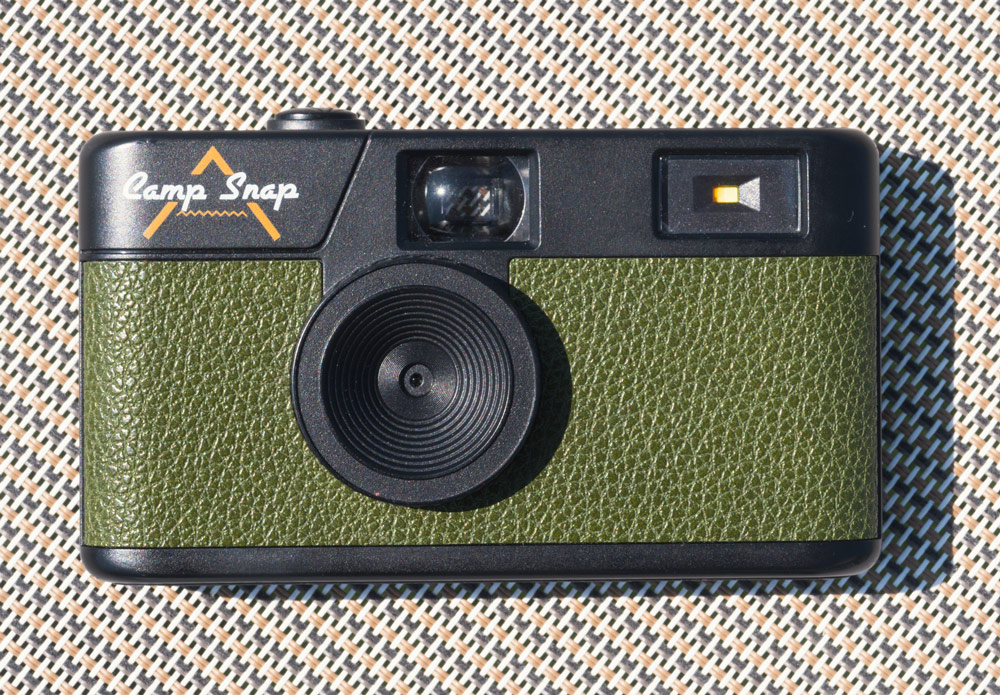
Green grins – Ben loves his lo-fi Camp Snap
Camp Snap: not just for kids
The Camp Snap is a very easy-to-use camera designed for kids on holiday camps with the idea that they can remain ‘present’ without distraction by screens. So there is no screen.
There’s very little to the camera, in fact – a shutter release that doubles as the on-off button and a flash setting, which has three options: on, off and auto.
Images can only be viewed after connecting the camera to a computer via a USB-C cable, which also doubles as the charging socket. The micro SD card is accessible, but you’ll need a small screwdriver.

In sunnier climes with great light, the Camp Snap comes into its own
Besides that, a simple LED counter lets you know how many photos you’ve taken. The viewfinder isn’t much to write home about, and once I had a sense of its field of view, I didn’t use it, preferring an element of educated guesswork.
The plastic lens has a field of view equivalent to about 35mm, which is perfect for me as that’s more or less the only focal length I use anyway.
To be honest, it’s not just kids that could do with remaining photographically ‘present’ without the distraction of screens, so this camera is perfect for most adults, too. Me included.
I’ve taken Camp Snap on a couple of recent international trips and had a great experience. Being free of the shackles of settings, menus, modes, and all the other bells and whistles associated with modern digital cameras was a liberating experience.
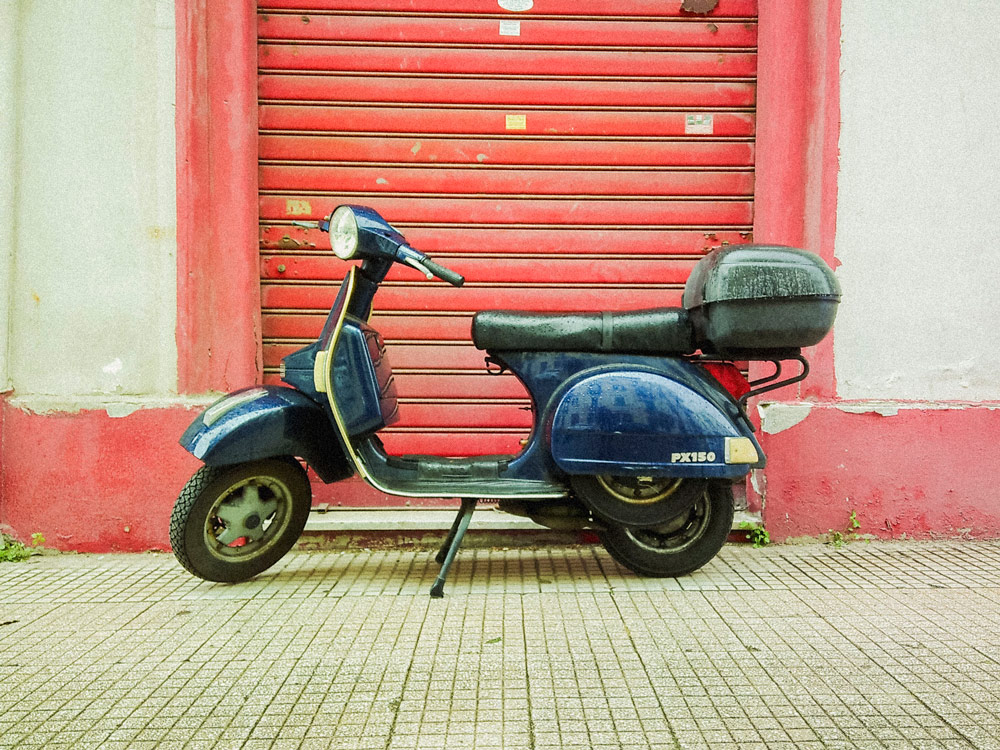
Retro subjects suit the lo-fi vibe particularly well
Being in the moment and embracing looking without being encumbered by technology is a beautiful experience. The toy-ness of the camera makes me behave less preciously about my image-making, too, and this is also a refreshing way to connect with the world photographically.
This mindful way of connecting with the world is important to me, and I sense is an approach that’s gaining popularity. The image quality is predictably poor when stacked up against a serious camera.
Better than you’d think
I made this little comparison below with my medium-format Fujifilm GFX 50R. As you would expect, the image quality from the much more expensive Fujifilm camera is far superior, even more so when you zoom in, so the comparison is a bit silly, albeit interesting.
I use the comparison in my workshops and talks to make the point that the act of looking, seeing and noticing, a sense of composition, design and an appreciation of light, along with storytelling, are all more important factors than the kit when it comes to making images. These two images below are essentially the same and make that point.

With the Fujifilm GFX 50R
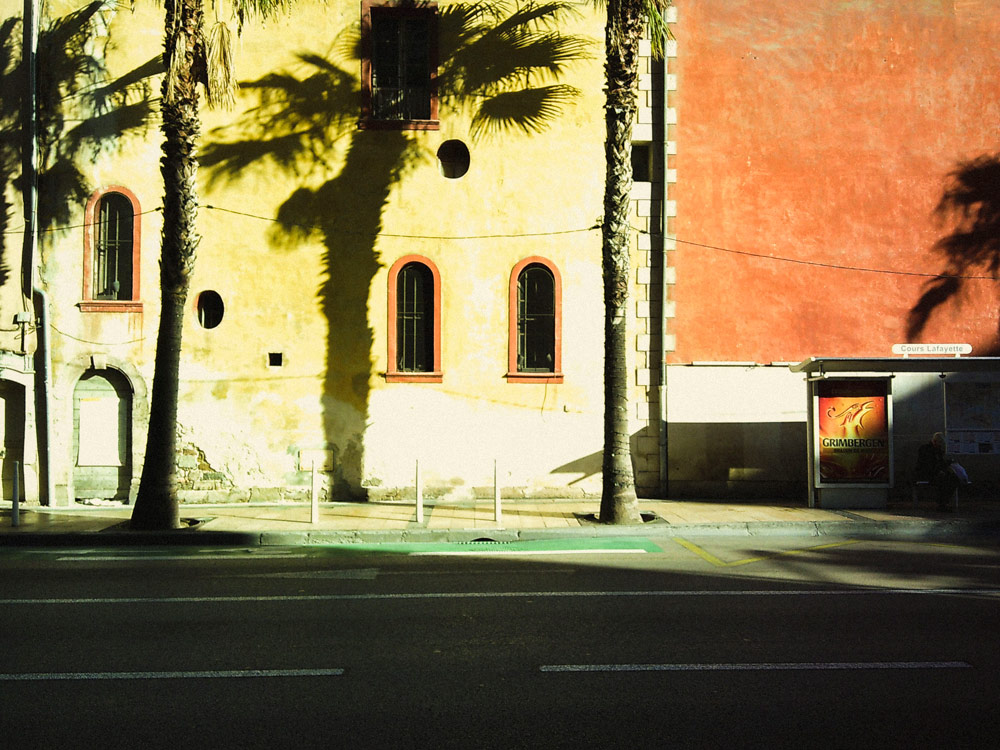
With the Camp Snap
The JPEGs out of the CampSnap are reasonable, perhaps marginally better than you expect. They generally have a lovely lo-fi vibe, which holds an allure for me. I run them through Adobe Camera Raw to tweak the tones and contrast and typically leave the colour as I found it.
I add a decent dose of grain, preferring the film-esque look to the jpg artefacts and digital noise, particularly noticeable in low-light photos made with the Camp Snap. There is a lag with the shutter, so the timing is a honed art that requires a decent amount of anticipation.

Various locations around the world were photographed with the Camp Snap. Looking for scenes that work, such as high-contrast situations with strong shadows, rich colour and a subject matter that suits the low-fi aesthetic.
It’s safe to say this is not a camera for action photography or any other activity which requires a quick response. That doesn’t matter, though, and this limitation also adds to the joy of using the Camp Snap camera and further encourages a ‘mindful’ attitude.
I’ve had the good fortune to travel a lot this year and encounter lots of lovely low raking light, rich contrast, long shadows, and an ethereal glow. The Camp Snap performs better in these conditions and produces some lovely colours.
I became a little obsessed with using the Camp Snap to capture my shadow, and for this, it worked a treat. The LED flash is pretty rubbish and can produce odd colours, but these, too, can be embraced once you free yourself from any hang-ups around quality.

Shadow self-portraits shot with the Camp Snap in the low, raking winter in various port towns worldwide.
Camp Snap: embrace the odd
With this camera you need to accept and celebrate its intrinsic rubbishness. If you have a creative instinct, can embrace happenstance, are not overly precious, and feed off the spirit of creative adventures, this is just the camera for you.
I don’t quite dare to leave all my cameras at home for big trips. I couldn’t, as I rely on them to make my living. However, I’m increasingly slinging my Camp Snap in my daily backpack and love using it on mundane trips to the supermarket.
It makes a great conversation piece with fellow creatives and comes in a bunch of swanky, stylish colours to choose from. Mine is green. This is a camera that a creative image-maker of any age can embrace and love.
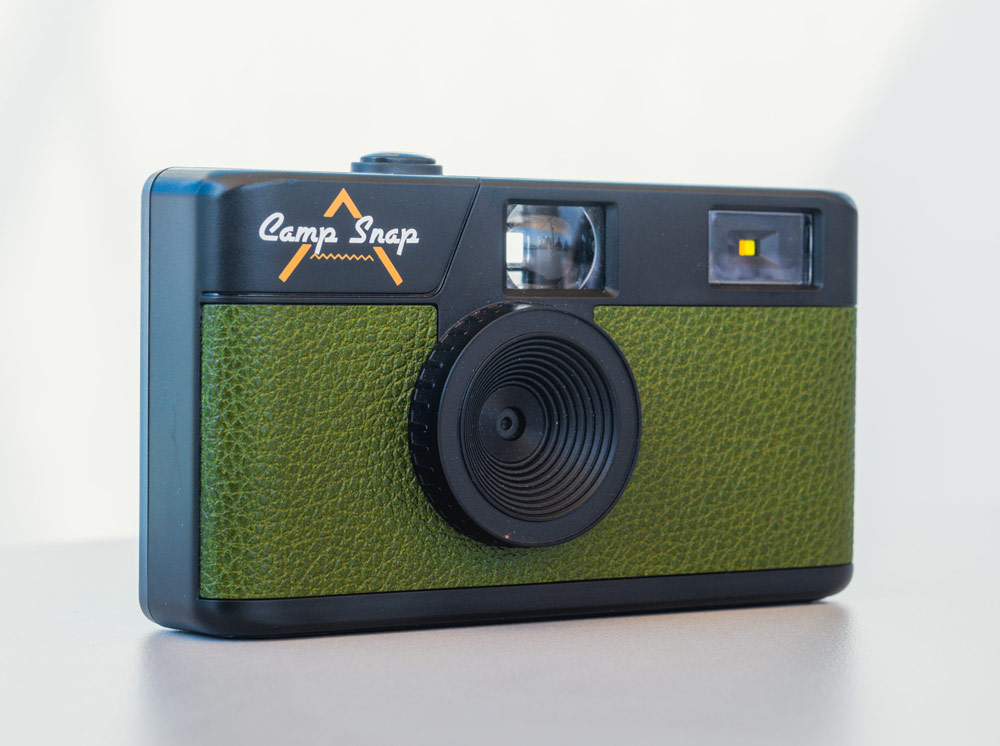
Further reading:
- Best compact cameras
- Vintage digital cameras you should actually buy
- Read our Camp Snap camera review
The views expressed in this column are not necessarily those of Amateur Photographer magazine or Kelsey Media Limited. If you have an opinion you’d like to share on this topic, or any other photography related subject, email: ap.ed@kelsey.co.uk

